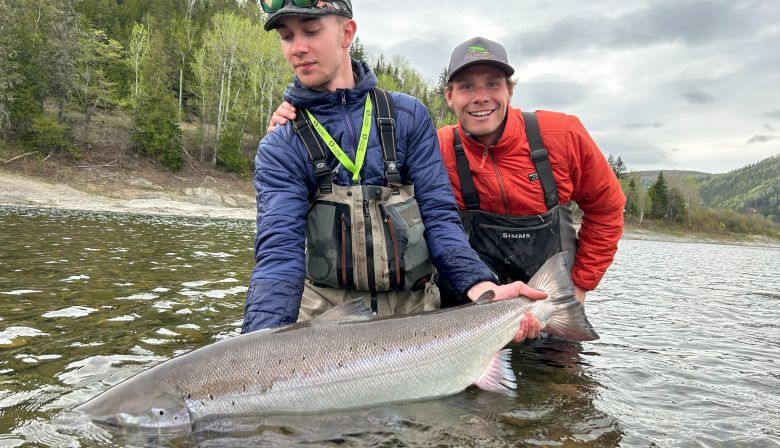
Subscribe & stay up-to-date with ASF

It’s like a story your grandfather would tell, fish so thick you can’t paddle through, but the video above was shot earlier this week.
Hundreds of thousands, even up to a million spawning striped bass crowd into the estuary of the Northwest Miramichi every year at this time. Females release eggs into the current and males erupt a plume of milt that turns the water white.
Striped bass have coexisted with all the native species of the Miramichi for thousands of years, but today they are surging and other fish species being eaten alive.
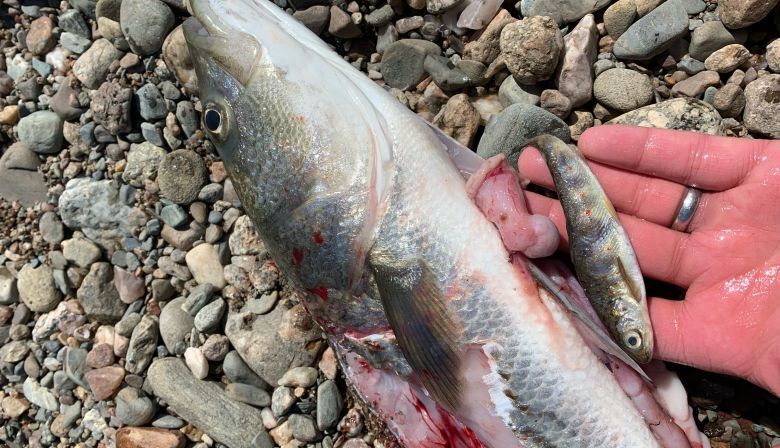
That’s nature, but this is a rout. Imagine being a 12-centimetre smolt from the Sevogle and trying to pick your way through 20-kilometres of dense, ocean-toned, stripers. Not very many make it.
ASF, the Miramichi Salmon Association, and in recent years the team from Anqotum Resource Management, have been tracking salmon smolt since 2003. Last year, only 3.8 per cent of the smolt run leaving the Northwest Miramichi survived through the estuary.
In other rivers that empty into the Gulf of St. Lawrence, smolt survival through the estuary remains high, like 70-90 per cent. The apparent difference is striped bass.
Striving for some type of fishery balance should be the goal of Fisheries and Oceans Canada, but that’s not what we see.
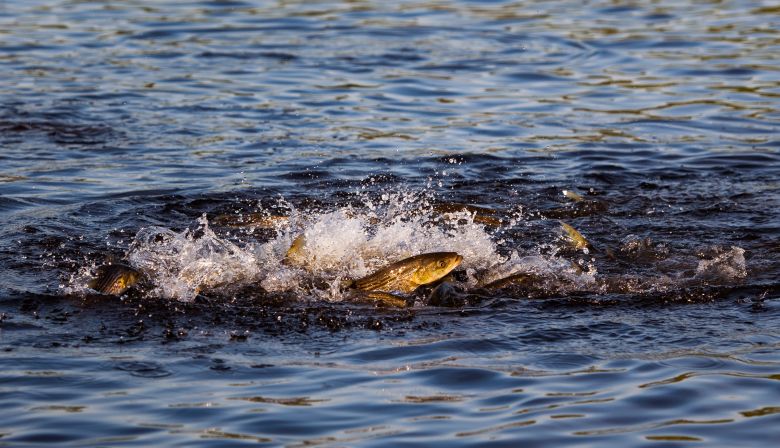
In fact, DFO increased protections on stripers in 2023. There’s no fishing when the spawn is on and DFO increased the size of the closed area and the length of time it is closed.
The salmon community has repeatedly asked for reforms, like allowing anglers to keep any sized striped bass caught in inland waters, but we have been continually rebuffed without good explanation.
We all want to see stripers and the incredible fisheries they support continue to thrive, but the table has been tilted against salmon, trout, smelt, and alewife. The least we could do is try for balance.

ASF is hosting two screenings of the International Fly Fishing Film Festival, featuring Dollar Dog, the short film by Tim Myers about a four-legged hero of the Margaree River. Check out the poster above for information. Admission is free, but donations make you eligible for great prize draws.
Sign up for free admission today at the location closest to you.
Freeport- https://qrcodes.pro/5oRePr
Cape Breton- https://qrcodes.pro/w0hScc
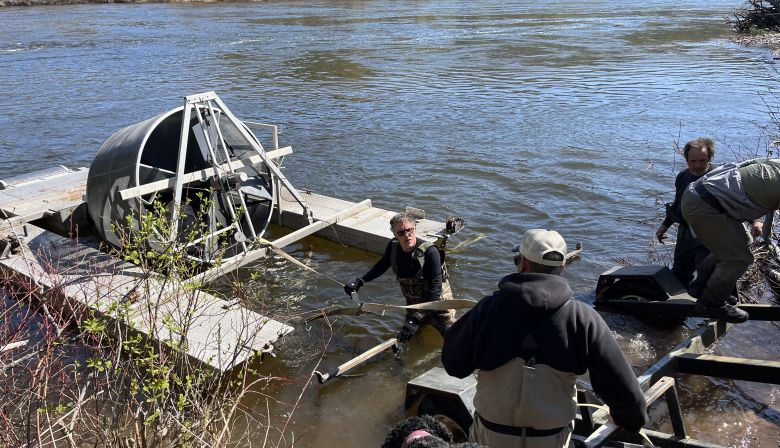
Jon Carr and I drove up to New Richmond, Quebec, on May 22nd to tag smolt on the Cascapedia River.
We started our work on Tuesday morning. Fortunately, the guides from the Cascapedia Society were not yet busy with guests.
Two men and a motor canoe were spared to help us put the smolt wheel in place. The job was finished by noon. The rest of Tuesday afternoon was spent deploying two receivers in the estuary.
The river was hovering around seven degrees Celsius, so we were ahead of the peak smolt run. Still, we were motivated to get the tagging done in one trip. We fished the wheel Tuesday night and were delighted to find about 75 smolt in the trap the next morning.
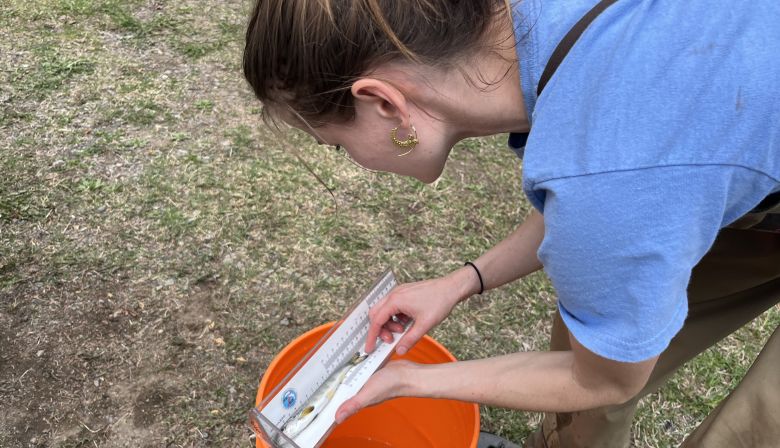
Our co-op student Madelyn Richardson, ASF’s Quebec program director Charles Cusson, and people from the Association de gestion halieutique autochtone Mi’kmaq et Malécite (AGHAMM) joined us to help with the tagging effort.
With their extra hands, a pop-up shelter to protect us from the rain, and eagerness to learn, the day flew by. On Tuesday evening, we released 50 tagged smolt, and later in the week we did 30 more fish, deploying all 80 tags we arrived with.
Thankyou to the Cascapedia Society and AGHAMM for assisting with the tagging effort and keeping us comfortable during our stay.
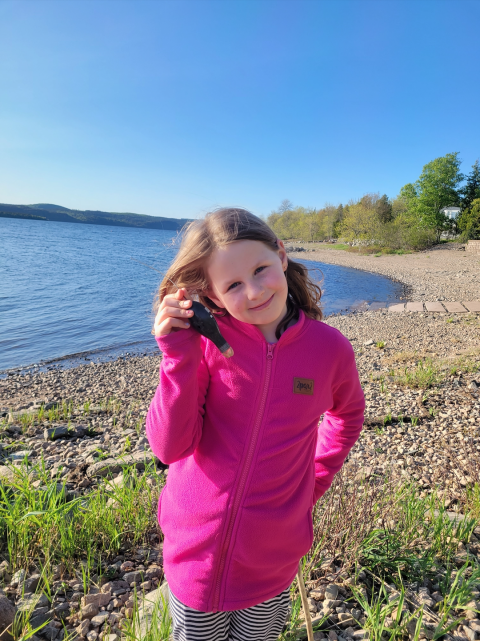
Two years ago, I was on the road looking for a couple of satellite tags we had attached to large salmon that popped off somewhere in the Gulf of St. Lawrence. They were transmitting their location and I could tell they were near the New Brunswick shoreline.
I plotted the location of their latest signal, in Miramichi Bay, and realized the shoreline looked familiar. Upon closer inspection I knew exactly where the tag was. I called my wife’s uncle and asked him to go for a stroll on the beach outside his house and it didn’t take him long to find the tag.
Something similar happened to me on May 29th.
I was checking if any pop-offs had released from fish we tagged earlier this year on the Hammond River. There was one and I recognized the property near it’s last point of communication.
It was my father-in-law’s house on the Kennebecasis River in Rothesay, New Brunswick.
We went over to have a look and he and my eight-year old daughter found it after about 20 minutes. So, on different coasts of New Brunswick, two satellite tags came to rest on the beach of a couple of good fellows who happened to be brothers and in-laws of the guy that put the tags on in the first place. Weird.
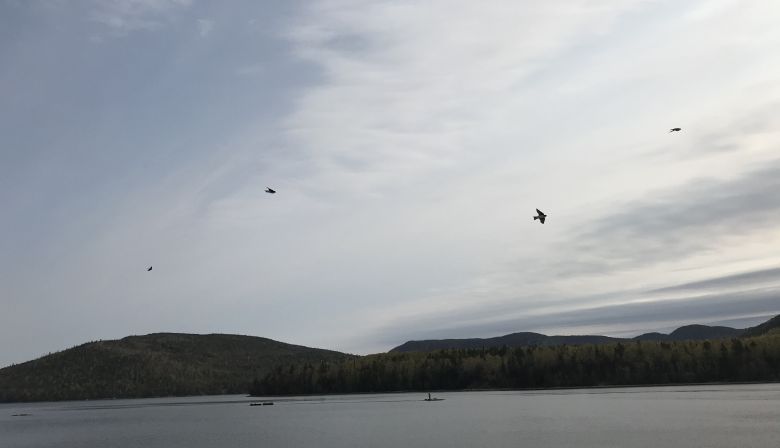
People on the Island of Newfoundland celebrated Fishmass Eve on May 31. Rivers on the island open June 1st and that day I drove to the Bay St. George area to speak with some early birds on the water.
There were a lot of anglers on Southwest River and Bottom Brook. Based on the reports I received, there were two fish hooked on Bottom Brook that morning, and about seven or eight fish were hooked on Southwest River.
Angler Cal Vincent and his two partners reported they hooked three grilse between them at the rocks on Southwest River that morning and two large fish were hooked by another group further upstream.
Angler Neil Smith reported there was a grilse or two hooked below the Trans-Canada Highway bridge over Southwest River this morning near the ‘Tidal Pool’, along with half a dozen trout that were in the two-pound range.
Things are off to a good start! Now we wait for opening day in Labrador on June 15th.
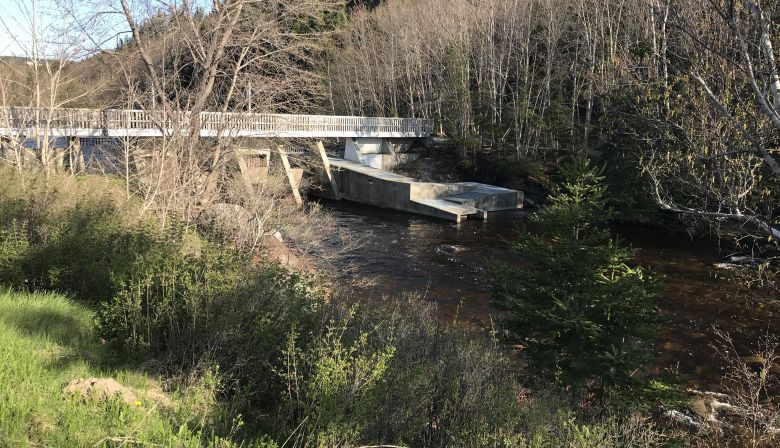
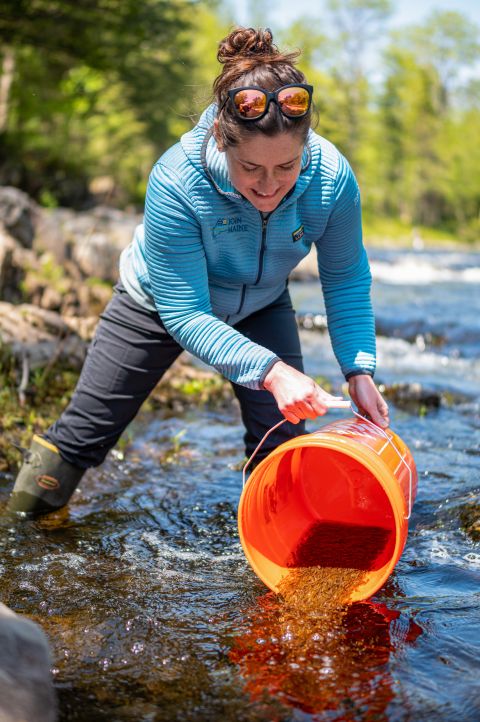
On May 23rd, a gorgeous, blue sky spring morning with black flies a plenty, a group of community members that live along the Piscataquis River took a field trip up to Kingsbury Stream to learn more about Atlantic salmon habitat in their watershed. We are partnering with the Town of Dover-Foxcroft to explore solutions for fish passage improvements at the dam the town owns on the Piscataquis River. Click here to read more about the project.

We met with Pete Ruksznis, a long-time salmon biologist with Maine Department of Marine Resources, to talk about the salmon life cycle and species recovery efforts throughout the Penobscot River watershed.
Pete was leading a fry stocking operation that day, so after some riverside talk, the truck from U.S. Fish and Wildlife Service arrived with the tanks full of Atlantic salmon fry destined for Kingsbury Stream. Everyone was able to take a look at these very young fish before they were placed into the river.
ASF along with The Nature Conservancy have been meeting monthly with these elected community members to work through the feasibility study. A field trip like this is important so folks can experience the river, see the fish, and understand how their decision fits in at a larger scale.
Fish passage at Mayo Mill Dam is critical because upstream there is 280 miles of resilient habitat that Atlantic salmon need access to. The committee in Dover-Foxcroft will make a decision later this year.
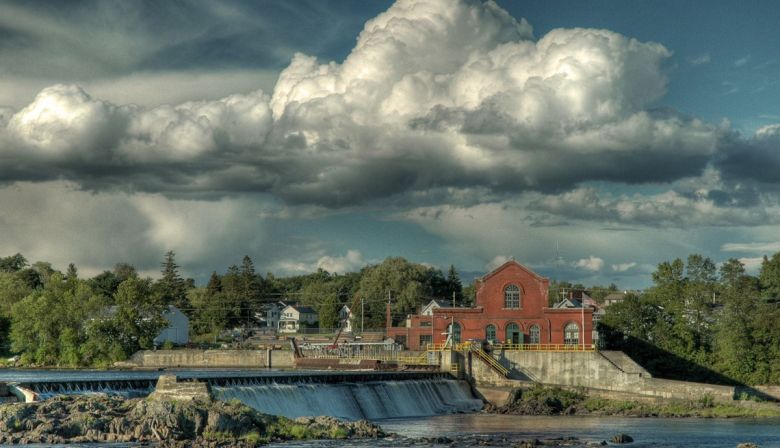
ASF has been a catalyst and a leader in Maine river restoration, and along with our partners we are starting to see these investments payoff.
Andy Goode, ASF’s vice president of U.S. programs, predicts that alewife, also called river herring, will reach 5-million this year on the Penobscot, up from a few thousand before the restoration of that river kicked off in 1999. Statewide, Goode says returns of these incredible sea-run fish has jumped from 1-million to 15-million in this decade.
And it’s not just alewife having a strong year according to Jason Valliere, a biologist with Maine’s Department of Marine Resources:
“May is still holding strong for river herring and Atlantic salmon. We have far exceeded our previous river herring record! Salmon numbers are very strong – one of our best May salmon counts to date.”
Click here to see the Maine sea-run fish counts to date.
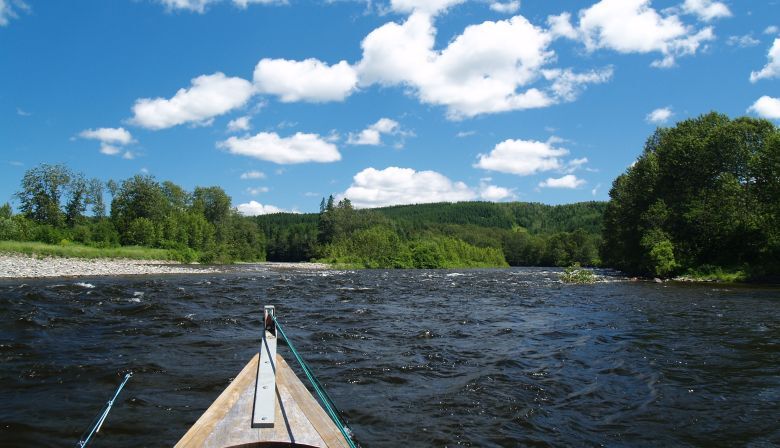
The 2023 Quebec salmon season officially started on the Causapscal on May 19th, and the 25th for some Gaspé rivers and the Moisie. Our salmon have been showing up early with river conditions resembling early July levels.
Most other rivers will open their seasons on June 1st.
Fifteen fish have been landed on the Causapscal including seven released to May 29th and as far as the Matapedia is concerned, 6 salmon have been released as per the Quebec salmon management plan. The CGRMP, which manages angling and access to the Matapedia and Patapedia rivers to date has sold an amazing 511 rod days for the Matapedia, compared to 231 to this point in 2022.

Geoff Giffin was chasing striped bass last weekend and ran into Elder Betty Ward. He had this to say:
“In addition to stripers we had the privilege of also swinging for May salmon with Elder Betty Ward on her home waters – the Oxbow Pool where the Little Southwest Miramichi River runs through the heart of Metepenagiag First Nation.
“Betty has been featured in the Atlantic Salmon Journal before and is a recognized leader in conservation and teaching fly-fishing to young people, especially girls, in the area. It’s always a pleasure to spend time with her. Thanks Betty!”

This weekend, June 3-4 is Fish NB days. This means anyone can fish without a license and without a guide, as long as they follow all other rules. It’s a wonderful opportunity to spend time with friends and family of all ages, or also a great time to introduce someone to fishing.
Many activities are being organized all around the province to take advantage of NB Fish Days, such as the Hammond River Angling Association’ s annual fishing derby –FISHING DERBY | HRAA
For more information, check out the province’s website: Fish NB Days – Natural Resources (gnb.ca)